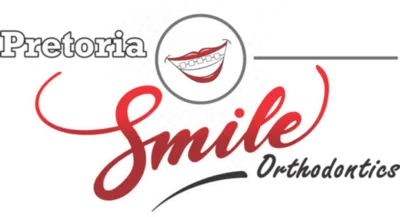Goal:
To provide an aesthetically acceptable and healthy dentition for life to contribute positively to the general facial form and appearance.
General Principals:
- To strive for a reduction of the actual treatment periods, using appliances that are simple as possible.
- Keep the duration of treatment to a minimum.
- Be sympathetic to individual needs and circumstances.
Treatment principals:
- Because the doubtful benefits of pre-surgical orthopaedics, deciduous dentition treatment and attempted skeletal protraction, and the unnecessary burden of care they impose, it will not be recommended.
- Removable appliance is not normally recommended, only fixed appliance to be used.
- Maxillary extraction choice, a general rule is to postpone any removal of unwanted teeth in the cleft area until this procedure can be combined with alveolar grafting. Exceptions to this are sometimes supernumerary teeth preventing eruption of permanent teeth. Extraction of teeth may be required in UCLP in the non-cleft quadrant either because of crowding, or to allow correction of the dental midline. The tooth most commonly removed is the non-cleft second premolar.
- Tooth impaction, it is reported that canine impaction to be10 times more frequent in cleft than in non-cleft individuals. Every effort should be made to bring the impacted tooth into their proper position by surgical exposure and mechanical eruption
- Buccal crossbite is corrected simultaneously with the anterior corrections using a removable quad helix appliance (using palatal sheath); which can be removed during the bone grafting procedure for improved surgical access. But this appliance should be replaced before the patient leaves the operating theatre, and left in place for 6 months. After this time, the bone graft is able to maintain the transverse dimension. The correction of remaining lateral cross bite of dentoalveolar origin is postponed until the full fixed appliance phase.
- Ectopic lateral incisor: maxillary lateral incisors on the distal side of the cleft are often palatally displaced with the root in an extreme palatal position that makes it especially difficult to align and more than 2/3 of lateral incisors are ultimately extracted.
- Timing of bone grafting will be decided individually. In-patient with well-formed lateral incisor that is not displaced from the arch, bone grafting is usually done quite early, around 7-9 years. Since the majority of patients have missing, ectopic or deformed lateral incisor, bone grafting may be postponed until 11-13 years. 2/3 of the canine’s root development is the ideal timing for bone graft.
- Deteriorating CL III skeletal pattern, where the likelihood of osteotomy is high, simple alignment of the upper arch may be all that required until the +15 years when pre-surgical orthodontics is performed. Distraction osteogenesis can be done as early as 5 years old.
- Closing the missing tooth space orthodontically if possible. In patients in whom space closure is not possible, the anterior space is restored with an acrylic tooth on a fixed lingual arch or a bonded bridge until a permanent bridge or dental implant can be placed.
- Patient with bilateral clefts (mobile premaxilla), which may jeopardize the immediate healing process after the bone graft, is stabilized with heavy rectangular arch wire to ensure immobility for 6 months postoperatively.
- Retention, the relapse tendency in patients with clefts is great due to the scare tissue from the primary surgery, so over correction is often advised. Thus a tight upper lip will prejudice the stability of proclined upper incisors and scars in the palate may encourage the migration of teeth into crossbite. Fixed retainers specially upper arch (bonded palatal retainer extends to two teeth on either side of the cleft) for lifetime is recommended.
Recommended treatment routine:
1. The first orthodontic evaluation may be scheduled even before the child has any teeth, to assess facial growth.
2. Second orthodontic evaluation may be scheduled at the age 7-8 years old. Incisor alignment can be provided at that stage if requested for aesthetic reasons and also possible that a correction of anterior crossbite at that stage will maximize the forward development of the maxillary dentoalveolar process. Orthodontic movement of maxillary anterior teeth at this time must be done with great caution because of the closeness of the roots to the bony defect. Treatment usually better postponed until after bone graft.
Information about dental care & missing teeth to be handed and discussed with the parents in that stage.
3. Third phase of orthodontics at age 10-13 years old just before the eruption of the cuspid by preparing the dental arches for bone graft to close using expansion appliance. A full record (panoramic x-ray & occlusal maxillary view lateral cephalometric view, photos & models) is recommended in that stage.
4. Final orthodontic stage will be done 6 month after bone graft usually when the cleft-side canine has erupted spontaneously to, complete alignment of the teeth.
Record Protocol for orthodontic purposes
Records for complete clefts (UCLP and BCLP)
| Timing | Photo | Models | Lateral Ceph | PA Ceph | OPG | Occlusal X Ray of Cleft Site |
| 8 Years | X | |||||
| 10 years (Prio to Ortho ach develpment) | X | X | X | X | X | X |
| 12 years (prior to ortho) | X | X | X | |||
| 15-16 years (after ortho) | X | X | X | X | X |
Records for patients with cleft lip/alveolus (CLA)
| Timing | Photo | Models | Lateral Ceph | OPG | Occlusal X-ray of cleft site |
| 8 years (before ortho) | X |

